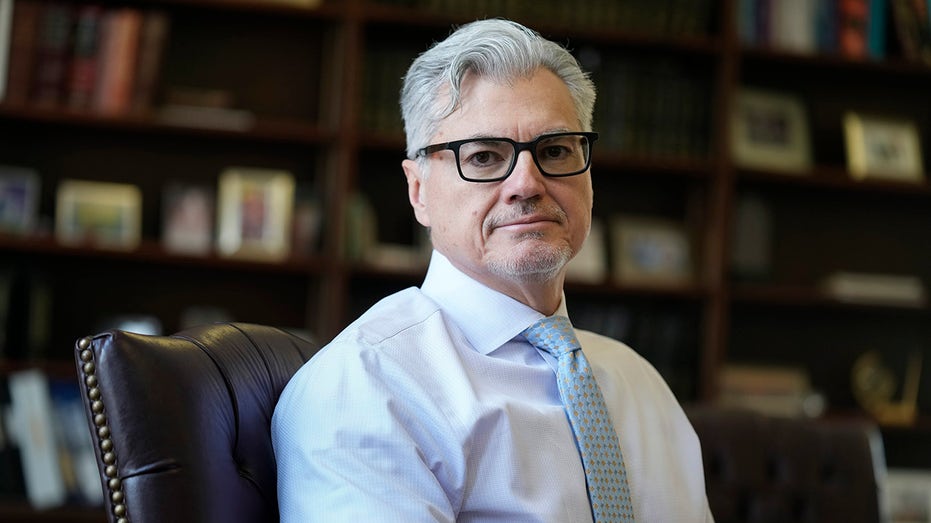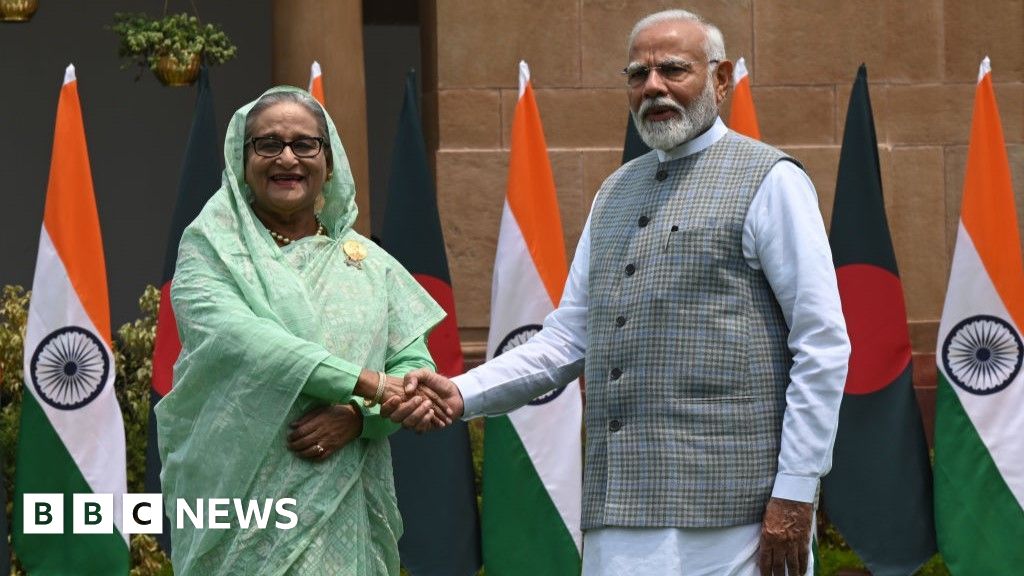How to stop mass shootings before they start
At least four people were killed, and nine were injured after a shooter opened fire at Apalachee High School in northern Georgia on Wednesday, the latest in more than 250 mass shootings that have taken place in the US in 2024. Police have revealed little about the shooting so far, except to say that the […]


At least four people were killed, and nine were injured after a shooter opened fire at Apalachee High School in northern Georgia on Wednesday, the latest in more than 250 mass shootings that have taken place in the US in 2024. Police have revealed little about the shooting so far, except to say that the suspected shooter is now in custody.
“Please, let us get the facts that we need to make sure we get this right,” a local sheriff said at a news conference Wednesday, describing an investigation that was still in its early stages.
Though the details will differ, many of the overarching themes of the Barrow County shooting are likely to sound familiar. The persistence of gun violence is one of the most tragic aspects of life in the United States. While mass shootings make up just a small percentage of the large number of gun deaths that happen in the United States every year, they are the most attention-grabbing and obvious manifestation of the country’s unique problem of too many guns.
The problem of mass shootings will likely be with us as long as we have more guns than people.
“There’s no easy solution,” says Daniel Nagin, a professor of public policy and statistics at Carnegie Mellon University. Nagin, who helped develop a series of evidence-based recommendations for reducing mass shootings, says that “the sheer volume of firearms” circulating in the US, which are “far more lethal than they were in the past,” make the notion of eliminating mass shootings altogether — commonly defined as a shooting where four or more people are shot — seem distant.
We don’t yet know who the Georgia shooter was, and what may or may not have motivated them. And while each mass shooting has unique circumstances, that doesn’t mean it’s impossible to prevent mass shootings. “One of the big stereotypes, or myths we have about mass shootings in general, is that perpetrators who do this go crazy and just snap,” says Mark Follman, author of the book Trigger Points: Inside the Mission to Stop Mass Shootings in America, and an editor at Mother Jones. “That’s not the reality at all of how this works.”
There are two broad approaches that can help mitigate the threat of mass shootings: proactive efforts to identify threats in advance, performed by behavioral threat assessment teams; and targeted gun regulations like red flag laws and bump stock bans.
Identifying the threat
Mass shootings are almost never random, according to Follman. The vast majority of mass shooters don’t spontaneously decide to pull out a gun in public and start shooting. Learning to identify who’s most at risk for committing mass violence, identifying warning signs and finding ways to intervene, can save lives.
That’s what behavioral threat assessment teams do. The process and composition of a team can differ in various contexts, including educational, corporate, and law enforcement settings, but the general idea is the same: the teams receive information from community members about behavior that is concerning. The teams investigate that behavior to determine whether someone is at risk of committing mass violence. Then, depending on their conclusion, the team finds a way to reach out to the person and try to get them support before they commit an act of violence. That contact can happen at the person’s home, but it might also happen at work, school, or another community setting.
It’s difficult to prove the efficacy of these interventions, because there’s no way to quantify the number of mass shootings that didn’t happen because someone got help. But experts and mental health advocates say the work has prevented people from carrying out violence, and Follman has reported on cases where law enforcement believes people were successfully diverted from committing acts of mass violence.
“It’s very possible. There are many examples of successful threat cases where the case subjects have been diverted away from, in many cases, often very serious and developed plans for committing violence,” Follman says.
Researchers have identified several circumstances shared by people who commit mass violence. They are almost (but not always) men, many of whom have suffered from some form of early childhood trauma or abuse. Most are suicidal. “The number of perpetrators who attempted suicide beforehand was astounding,” Jillian Peterson, a professor at Hamline University and co-founder of The Violence Project, a database of every mass shooting in the US since 1966, has said.
Peterson, who with her colleagues interviewed the small number of mass shooters who survived after committing violence, came to an important realization: that “nobody goes in planning to come out.” That insight is significant, she says, because it means that some of the same tools mental health professionals have to prevent suicides can help prevent mass shootings as well.
But while those are common factors among mass shooters, they aren’t the most helpful at determining risk — the vast majority of men, and people who are suicidal, don’t become mass shooters. Other behavioral indicators help investigators better identify who is most likely to commit mass violence.
Among the most important is a history of domestic violence. In 2021, researchers found that a majority of mass shootings were domestic violence-related. “A substantial fraction of mass shootings are not these killings of strangers in public places, but they occur in ongoing domestic disputes,” says Nagin.
Garen Wintemute, the founding director of the Violence Prevention Research Program at University of California Davis, and an expert in mass shootings and political violence, says that “intervening on people involved in intimate partner violence at whatever level of severity likely has a role in preventing mass shootings and many other bad things down the road.”
Researchers have identified other behaviors common in mass shooters: a sudden increase in, interest in, or purchases of guns and ammunition, and increased interest in previous mass shooters. A would-be mass shooter also often makes bizarre or threatening comments in the lead-up to a shooting, indicating to those close to him, or to a community online, that he intends to do something violent — a phenomenon researchers call leakage.
When a behavioral threat assessment team has identified someone at risk, the next step is to come up with a plan to help. It often involves the person’s family or friends, and can entail direct contact with the person of concern. “The ideal of this work is with both empathy and concern,” Follman says. “And then coming up with a plan to intervene and try to help, which is also based on specific information gathered about that person from the person themselves and the people around them. What does this person need? What can we do to help move them away from where they are now to a better place?”
The goal is to make the person less isolated and angry, and to attempt to ease the grievances that might be making them feel violent. Every treatment plan looks different.
“It’s not like there’s a simple menu and you pick one thing and then the switch flips and everything’s fine. That’s not how threat management works,” Follman says.
Currently, in-school threat assessment teams are required in nine states, not including Georgia — but experts say that more states should require them, and make sure they have the resources they need to develop risk assessment strategies and track their results. People who live in states without risk assessment teams can push their states to require them in schools and other government settings.
Finding gun regulations that help prevent mass shootings
One appealing thing about behavioral threat assessment work is that it’s an intervention that can be done without butting head-first into the brick wall that is America’s intractable debate over gun control.
But make no mistake: a country with over 400 million guns in it, and with gun regulation so lax that almost anyone can carry a gun in public whenever they want, makes the work of preventing mass shootings much more difficult.
Still, there are specific gun policies that can help prevent mass shootings and might be more politically feasible. Lawmakers and voters who care about reducing mass shootings have already helped push for their passage in states like New York, Florida, and California. For advocates who care about reducing mass shooting, they are a good place to start.
One of the most important legal tools available to prevent mass shootings is extreme risk laws, commonly referred to as red flag laws. The laws, currently in place in 21 states, including several after the Parkland, Florida, school shooting in 2018, allow both family members and law enforcement to petition courts to temporarily confiscate someone’s firearms if they believe the owner is at a risk of committing harm either to themselves or others. Red flag laws, Follman says, are “a relatively new gun policy that is very important and very useful to the field of threat assessment.” Though critics have challenged the constitutionality of the laws, they have so far withstood legal challenges.
Another common factor among mass shooters is their use of assault-style rifles, known for their capacity to rapidly fire bullets and to kill or injure large numbers of people in a short amount of time. Though research has shown that assault weapons bans can meaningfully reduce mass shooting deaths when they’re in effect, Republicans blocked an assault weapons ban when it came before Congress in December 2023, and polls show that while Americans generally favor more strict gun regulation, they are more divided on the question of whether to ban assault weapons outright.
In part because of Republican opposition to regulating assault rifles, gun safety advocates have turned their focus to banning bump stocks as a more targeted and effective means of reducing mass shootings, and in 2018 the Trump administration took the rare step, for a GOP administration, of banning bump stocks following a Las Vegas mass shooting. But the Supreme Court struck down the regulation in June 2024.
What happens next is an open question, and Republicans have been relatively quiet about the Supreme Court’s decision. But congressional action could be an important next step. As Justice Samuel Alito noted in his concurring opinion, Congress could pass a law banning bump stocks, which would help limit the lethality of weapons used by mass shooters.
Given that a Republican president was the first to ban bump stocks, and the regulation was relatively uncontroversial at the time, it’s not impossible to believe that Congress could make it happen. Similarly, Vice President Kamala Harris has urged states to adopt red flag laws, and former President Donald Trump also previously expressed support for these laws, despite the concern from gun rights advocates. Support from leaders of both major parties belies the notion that gun regulations that could counter mass shootings are completely off the table.
And though experts say passing those laws would have an impact, they are not the only thing that can be done. Family members and law enforcement in states that already have red flag laws can try to get the courts to intervene if they’re worried about someone with guns. Individual community members, especially in the workplace and at school, can pay attention when someone seems to be leaking intentions of a mass shooting and report that behavior to the authorities. The media can do their best not to elevate the profiles of mass shooters, which has been shown to inspire a copycat effect.
Most of all, Follman says, it’s important not to treat the problem as hopeless. Sometimes, he says, that can even encourage would-be shooters. “We have this national narrative about how this is never going to end and nothing ever really changes, and there’s nothing we can really do about it.” But understanding that mass shootings aren’t random, that they can be predicted and prevented, can help people understand what warning signs to look out for.
“Despair and outrage,” he says, “is not a good way to think about the problem.”















